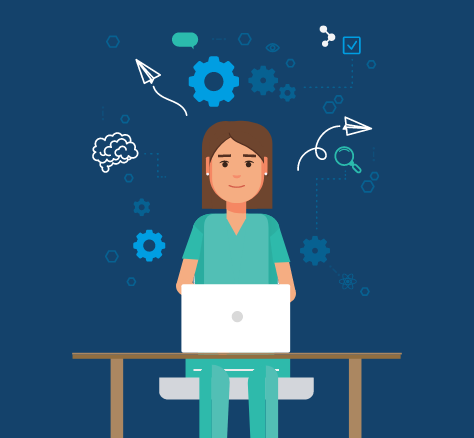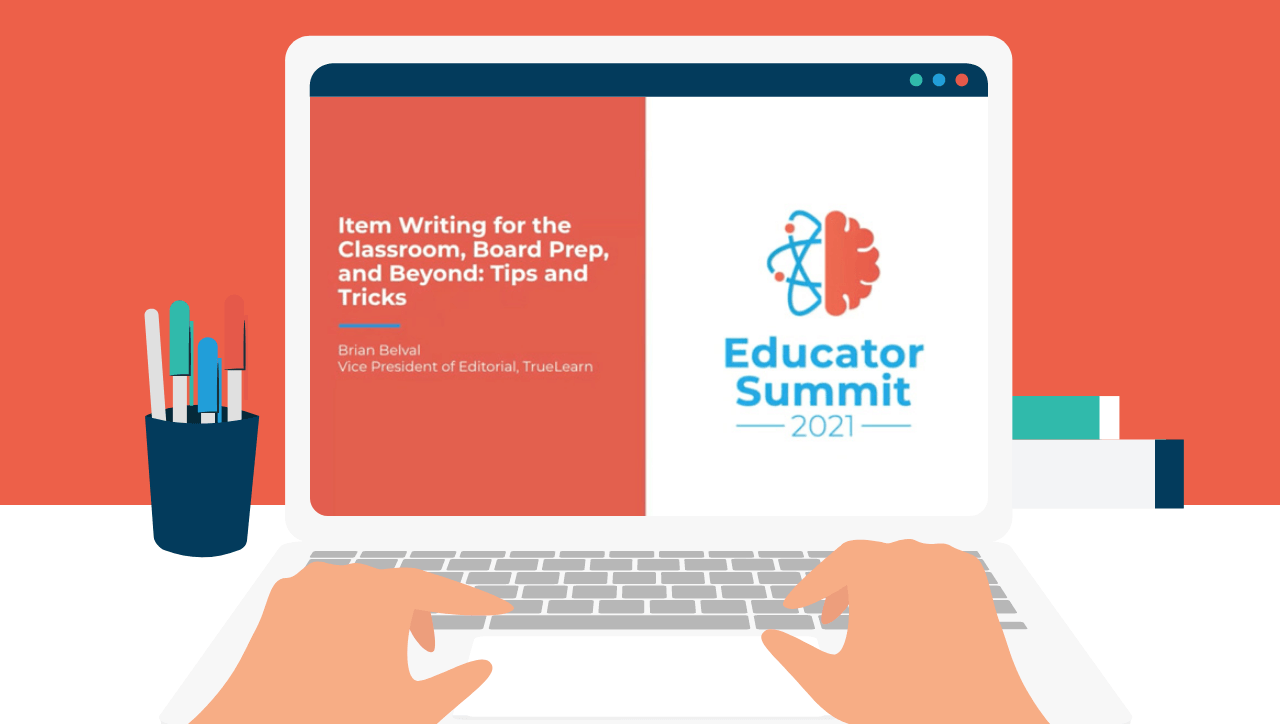The Science of Learning: Important Things You Need to Know

Learners come in all shapes and sizes. This is no different in healthcare education with individuals of differing learning preferences, mindsets, and experiences all coming together. An educator’s task is to provide a supportive environment for each learner to flourish. New research1 suggests that adults learn differently than children, thereby introducing adult education theory – andragogy.
Leveraging the science of adult learning, this blog shares the most effective approaches to help all types of learners build meaningful connections with taught content.
Back to the basics – how we learn
A recent meta-analysis2 of learning techniques showed that distributed practice and testing resulted in higher long-term retention. This form of active learning is touted for its many benefits, one being the promotion of higher-order thinking such as knowledge application, analysis, and synthesis. Active learning includes discussions, problem-solving, case studies, role play, questions, or games. These activities promote deep thinking and teach learners to apply and transfer knowledge intuitively and effectively.
Another – and arguably the more important – facet of active learning involves learning how to learn. Learning strategies are essential to a learner’s lifelong journey. For example, the active retrieval of facts through multiple spread-out review sessions helps improve long-term recall, paving the way for quick decision-making in high-stakes situations. One way to help learners is to include low-stakes recall quizzing throughout the curriculum.
Building on the basics with the mastery-based model and positive humor
The mastery-based model is essentially repeated active learning engagements to help learners acquire a solid foundational understanding of a topic or concept before moving on to the next, allowing them to build upon mastered concepts. To do this, educators must create learning environments conducive to self-paced and adaptive learning opportunities.
Humor is another crucial learning tool. According to the Von Restorff Effect, one is more likely to remember a fact the more outlandish and wackier the humor associated with it. Positive humor has been demonstrated to help learners remember complex medical concepts in clinical settings. Conversely, educators need to be mindful not to use aggressive humor to tease, ridicule, or disparage trainees, as this can negatively influence the learning environment and impact learning.
Transforming a fixed mindset to a growth mindset

Not all learners enter higher education and professional school having mastered learning strategies. To help learners with this fundamental skill, educators must first understand different learning mindsets and how they impact learning.
Those with a fixed mindset tend to avoid challenges, put forth less effort and may give up quickly out of fear and lack of confidence. These learners cope poorly with failure and need more encouragement. Educators can support them by encouraging the belief that intelligence and talent are dynamic.
Helping your learners move away from the “I am a horrible test-taker” to the “I can work hard to become a better test-taker” mindset takes time and patience, but fostering and developing a growth mindset in learners is well worth the effort. With a more open mind, learners can work towards mastery with openness to criticism and perseverance.
Enter the Master Adaptive Learner Model
A new learning model introduced by the American Medical Association (AMA), the Master Adaptive Learner Model challenges the popular Visual, Auditory, Reading/Writing Kinesthetic (VARK) Model developed in the 1920s. While the VARK Model influenced the popularity of learning styles theory, science has proven the theory to be a myth as the way we learn is not fixed. Many learners may not recognize that they are engaging more than one sense at any given time, acquiring deep-seated narrow beliefs which negatively impact their motivation, behavior, and success.
Educators can nurture the Master Adaptive Learner by creating lessons that engage all the senses. For example, instead of assigning readings all the time, educators can post podcasts, videos, or field trips to leverage learning preferences while building on other weaker capabilities. This will go a long way in encouraging learners to adapt when faced with challenges in their future clinical environment. Adaptability can be measured by the ability to identify gaps in knowledge, utilize self-regulated learning, and develop adaptive expertise. These essential skills will determine the success and quality of a future clinician.
The importance of cross-generational learning
Ronald Reagan once said, “Each generation sees farther than the generation that preceded it because it stands on the shoulders of that generation.” Taken from the educator’s perspective, this is a reminder that while imparting knowledge, they can also learn from those whom they are instructing—learners may come from different age groups, backgrounds, and experiences—to craft effective teaching.
Gen X, Millennials, and Gen Z are the most common groups in today’s classrooms. Below is a table comparing the learning traits, relationships with educators, and preferred learning modes of each generation and how educators can use different approaches to enhance learning.
| Gen Z 3 | Millennials 4 | Gen X 5 | |
|---|---|---|---|
| Learner traits | Technology-savvy, resourceful | Outspoken, collaborative | Independent, pragmatic |
| Relationship with educators and the larger institution | Reject social institutions as they need to know what they’re doing is impactful on the individual and community level | Respect for authority while strongly challenging the rationale and relevance of long-standing idioms | Dislike coddling and prefer clear instructions |
| Preferred learning mode | Desire collaborative and social learning mediated by technology | Desire interactive, experiential, and flexible learning | Desire highly structured environments with clear expectations |
| Effective teachings strategies | Provide opportunities for interaction both in person and online Supplement learning with technology, such as e-learning platforms, videos, etc. | Allow flexibility and choice in how assignments are completed Communicate clearly with key takeaways and frequent feedback | Provide a detailed curriculum plan with lesson parameters and assignment deadlines Use case studies to show real-world applications |

When teaching across multiple age groups, educators may encounter negative connotations of a particular generation. This is an opportunity to leverage a “negative trait” into something more positive by taking the perspective of that generation. Understanding why they learn the way they do can help you craft your lessons. For example, it is more conducive to perceive millennials as non-traditional and autonomous than to think of them as lazy. That way you can consider allowing more flexibility and room for collaboration to empower this cohort to flourish on their terms.
Paving the way for classroom success
While beneficial to cater to different learners, some strategies apply across the board. As a rule of thumb, all learners desire to be valued for their strengths and contributions. Therefore, creating an environment of mutual respect and acceptance through open communication is crucial. Educators can also develop purposeful assignments, provide quick and constructive feedback, and use appropriate technology to keep motivation high. Teaching is a fluid process, so don’t be afraid to experiment!
Find out how to optimize learning and exam outcomes for your learners. Speak to a representative or schedule a demo today.

Learning in the post-COVID era
The pandemic not only posed significant challenges and immediate changes to the world of education, but the impacts have been long-standing. Flexibility, adaptability, and hybrid methods became necessary to continue learning. As we move out of the emergency response, educators must reflect on what learning strategies and techniques should be incorporated into our post-COVID learning environment. One recent study of higher education found that a hybrid approach (face-to-face lab activities with online teaching sessions) provided a balance for learners—they were able to master the content and valued flexibility 6 .
Additionally, what is taught also needs to be critically analyzed. Learning post-COVID should be based on strengths, passions, and learner autonomy. It is critical that we not assume the impacts are static. Flexibility and adaptability will be crucial moving forward. And as we do so, it is helpful to continually analyze the effectiveness of our curriculum and instruction and adapt as the needs of learners and the learning environment change.
References
1 Malcolm S. Knowles, Elwood F. Holton III, Richard A. Swanson. The Adult Learner: The Definitive Classic in Adult Education and Human Resource Development. Accessed March 20, 2023. http://intrpr.info/library/books/knowles-the-adult-learner.pdf
2 Garcia JT, Dubose L, Hairrell AS, Milman RM, Carpenter RO. 17. Medical trainees’ perspectives and use of humor in clinical settings: A systematic review and metasynthesis. Plast Reconstr Surg Glob Open. 2022;10(5S):9-9. doi:10.1097/01.gox.0000834956.67576.36
3 Mazaudier J. Rethinking training and development for generation Z. Panopto Video Platform. Published January 16, 2020. Accessed March 20, 2023. https://www.panopto.com/blog/rethinking-training-and-development-for-generation-z/
4 Millennials infographic. Goldman Sachs. Accessed March 20, 2023. https://www.goldmansachs.com/insights/archive/millennials/
5 De Vore and Rhonda L. Harvey RLCJB. Learning Style Preferences of Cohorts: Generation X, Baby Boomers, and the Silent Generation. PAACE Journal of Lifelong Learning, Vol. 10, 2001. Accessed March 20, 2023. https://www.semanticscholar.org/paper/Learning-Style-Preferences-of-the-Cohorts%3A-X%2C-Baby-Cambiano-Vore/0ddc0313d10daf0356ae5a3ecbfb3e2915a511b8
6 Bashir A, Bashir S, Rana K, Lambert P and Vernallis A (2021) Post-COVID-19 Adaptations; the Shifts Towards Online Learning, Hybrid Course Delivery and the Implications for Biosciences Courses in the Higher Education Setting. Front. Educ. 6:711619. doi: 10.3389/feduc.2021.711619


![Strategies To Encourage Independent Strategic Learning [Educator Webinar]](https://truelearn.com/wp-content/uploads/2021/06/Educator-Webinar-Strategies-To-Encourage-Independent-Strategic-Learning.png)
